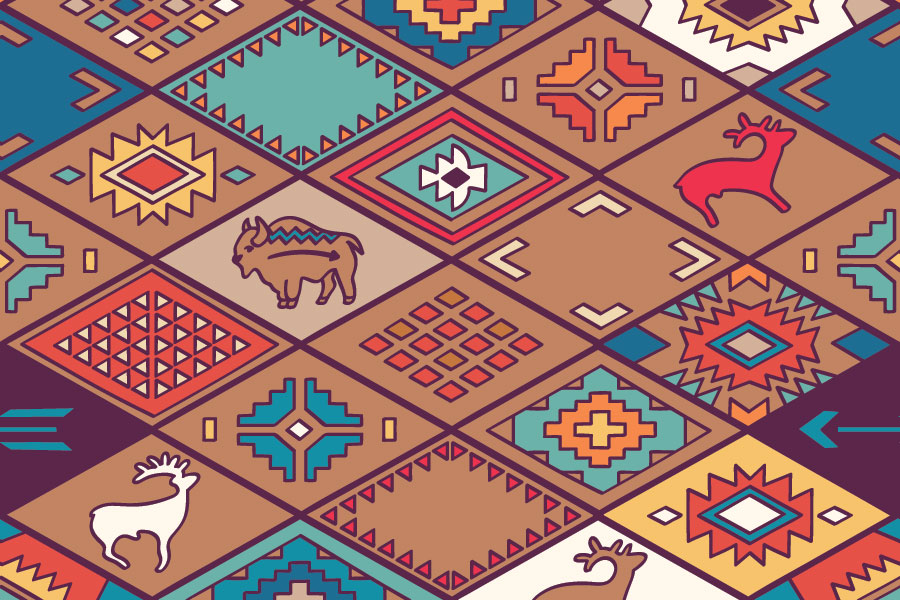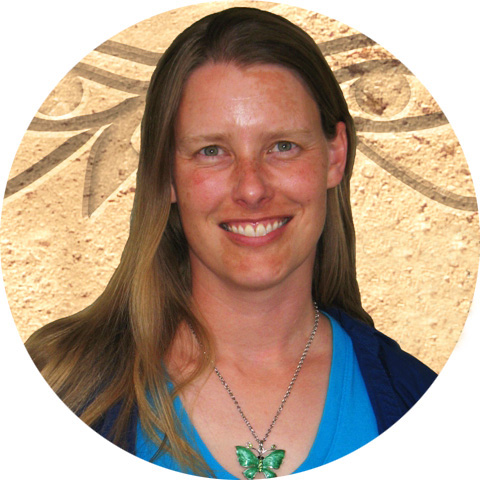This post is a excerpt from You Can Write for Children: How to Write Great Stories, Articles, and Books for Kids and Teenagers, from Chapter 21.
We live in a world of many races, cultures, and religions. Children’s literature should reflect that diversity, but white, Christian characters and culture dominate. One recent study found that of children’s books with human characters, only about 10% featured nonwhite characters. Yet more than 37% of the US population is nonwhite, and that percentage is growing. (In these figures, Hispanic/Latino people and characters are counted as nonwhite.)
Many publishers want books that show diversity, and they hope their offerings will reach a general audience. They want characters from a variety of cultures, and stories where race is not necessarily important to the plot: school stories, fantasy, science fiction, and more, where some characters simply happen to show our world’s vast diversity.
Alvina Ling, VP and editor-in-chief at Little, Brown Books for Young Readers, has said, “There were few depictions of contemporary Asian Americans in the books I read growing up, and I really hungered for them. I also think that it’s helpful for children (and adults) to read books that feature characters of many different backgrounds – this helps foster communication and acceptance between different cultural groups.”
Writing Across Cultures
Some authors may wonder if they have the “right” to write about other cultures, or fear being accused of appropriating another culture’s voice. Yet most editors feel an author’s background is a distant second to writing skill. “I’m always looking for authors of color, because we need diverse voices,” Ling says. “However, I’m open to books written by authors of any color for multicultural subjects.”
Criticism does happen. Jodi Lea Stewart says, “Growing up on a ranch in the Arizona White Mountains wedged between two major Native American tribes contributed greatly to my decision to write the Silki, the Girl of Many Scarves trilogy. The novels feature a Navajo protagonist living in a contemporary Navajo Nation. When I first considered the idea of writing outside my own culture, I encountered excitement from many Navajos, skepticism from a few, and outright antagonism from others. The objections raised seemed to center on the fact that I wasn’t Diné (Navajo), so how could I possibly understand their ways? ‘Why don’t you write in your own backyard?’ some asked me.”

Stewart says, “Actually, I was doing just that. I had been one of only seven Caucasian children at the school I attended in Concho, Arizona. My classmates were Hispanic, Apache, or Navajo. We were friends. Learning companions. Playground buddies. My goal was to honor them by bringing a positive public light into their cultures. Some people ‘got that’ and others turned away.”
Stewart went forward with her project. She says, “To write about a culture very different from one’s own takes raw courage, as well as a commitment to the deepest level of research to find the authentic voice and cadence that ultimately brings light and understanding to that group of people. What one may discover in this expedition is an almost effervescent reality that people of all cultures truly share more similarities than diversities. That alone will make the journey extraordinary.”
Physical and Mental Conditions
Diversity involves many aspects of biology and culture. People of all ages have a variety of physical and mental abilities/illnesses. One young reader could be going through cancer treatment. Another may be blind or deaf. One might be on the autism spectrum or have just received a diagnosis of ADHD. Some children need to use wheelchairs. Some suffer from depression or an anxiety disorder.
Other young readers have family members with special needs, physical challenges, or mental illnesses. These kids may have responsibilities the average young person doesn’t have because of unusual family demands. Finally, some children suffer from physical, mental, or sexual abuse, which can also contribute to mental health conditions such as Post-Traumatic Stress Disorder (PTSD). Kids whose lives have not been affected in any of these ways still benefit from knowing about these situations. It helps them understand and empathize with their classmates, and it helps prepare them for challenges they could face in the future.
Jim Tritten, a writer and a volunteer for the National Alliance on Mental Illness, says, “You can’t just pretend that all kids grow up in a normal, functional household. If a kid is having an issue at home, and he’s reading a book dealing with that issue, the subtle message should be, number one, you’re not alone, and number two, you need to tell someone about it.” He’s worked with adults who are still processing childhood traumas, because they were not addressed when they happened. “In the kids’ case, they won’t seek help because they’re afraid, they’re ashamed.” Books can offer comfort and even encourage young people to seek help.
Suzanne Morgan Williams is the author of Bull Rider, which includes a character who has returned from Iraq with a severe TBI [traumatic brain injury]. “Disabled people can be interesting characters,” she says. “Just don’t depend on your assumptions or even on one friend for your information. Talk to experts, talk to families. Be sure you aren’t stereotyping the character because above all else – any other injury, happenstance of birth, personality trait – your character is a person. Make your subject as complex, emotional (perhaps in their own way), silly, angry – whatever – as anyone else. A mentally or physically challenged person can hold his own in your manuscript if you research, avoid stereotypes, and let their personalities shine.
Putting It All Together
Finally, it’s worth noting that books can include characters from more than one category of diversity. Christine Kohler’s novel No Surrender Soldier is set on Guam during the Vietnam war era. The characters are nearly all non-Caucasian, mainly Chamorros – indigenous Pacific Islanders in the Mariannas – or Japanese, or mixed Chamorro and Japanese. The main character’s grandfather has a disease similar to dementia. Two other characters have PTSD. That’s a lot going on in one book, but it reflects the complexity of real life. Strong storytelling means the novel is still accessible to the average teenager. According to the review journal Booklist, “This debut transports readers to an exotic place in a troubled time and reveals that being a teenager in Guam is not so different from being a teen elsewhere in the world.” By finding commonalities among differences, a writer can introduce young readers to different experiences and viewpoints.

Kohler, who lived and worked in Japan and Guam before writing No Surrender Soldier, says, “Experience and research can create authenticity in writing about people of other ethnicities, cultures, religions, genders, and physical conditions. Stereotyping comes from lack of research or experience. The less personal experience the writer has with a character different in any way from the writer, and setting and culture foreign to what the writer has experienced, calls for deeper research.
If you are going to write diverse characters, perhaps you’ll draw on your own experiences. Remember to try to capture the child or teen’s view, rather than writing from an adult outside viewpoint, either looking back at your childhood or analyzing your own children.
Even if you do have personal experience, you still might want to do additional research. There is no single experience with race, culture, gender identity, physical ability, or mental illness. Researching a condition or interviewing people with a certain background can help you create an accurate, well-rounded portrayal.
No Limits
So what does all this talk about diversity mean to you? You don’t need to pack your stories full of diverse characters if you don’t choose to. However, strong stories today help reflect our diverse world, so consider whether some diversity would be realistic and appealing. And if you are called to write a certain kind of character, know that it is fine to do so. Nothing is automatically “off-limits” in children’s literature. The story has to be appropriate for the audience age, and it should be a great story, but within those parameters, anything and everything can work.
Selling Diversity
Short multicultural nonfiction can find a home in magazines that explore world history or culture. Each issue of FACES, for ages 9 to 14, covers a specific country or topic, such as “Family Life Around the World.” Personal experience with the culture helps, but the most important thing is writing a kid-friendly article.
Books that feature different cultures, especially historical fiction and nonfiction, can benefit if they work well in the classroom. My Mayan novel, The Well of Sacrifice, has stayed in print since 1999 because many schools use it when they study the Maya. To target the school market, seek out underrepresented cultures with the appropriate grade level curriculum tie-in, and write a dramatic story.
The demand for diversity does not mean that it is easy to sell a book with a multicultural cast. The story still needs to be excellent, with broad appeal. Stories should attract those of the same background as the characters, but they need to draw a general audience as well. To do that, Kohler says, “Write from the depth of emotion – from love to suffering – that we share in humanity.”
The more diversity our short stories, novels, and nonfiction show, the better we’ll reflect real life – and help young people develop compassion and understanding.
You Can Write for Children includes the full version of this 4000-word article, including an essay by blogger Lee Wind on Including Diversity of Love and Gender.
- The Children’s Book Council CBC Diversity shares news encouraging diversity of race, gender, geographical region, sexual orientation, and class.
- Cynthia Leitich Smith’s Exploring Diversity page has links to book lists about many religions and races, and relevant interviews.
- Multiculturalism Rocks! is a blog celebrating multiculturalism in children’s literature, with many useful links.
- We Need Diverse Books promotes changes in the publishing industry to produce literature that reflects all young people.
- Disability in Kidlit examines the portrayal of disability in MG and YA literature.
- Author Lee Wind’s blog lists books with gay teen characters or themes, interviews with agents seeking diverse stories, videos on gender identity, and more.
- 41 Transgender-friendly Books for Young Kids
- SCBWI has grants to promote diversity and children’s books
You Can Write for Children: How to Write Great Stories, Articles, and Books for Kids and Teenagers offers an overview on writing for young people. Learn how to find ideas and develop those ideas into stories, articles, and books. Understand the basics of character development, plot, setting, and theme – and some advanced elements, along with how to use point of view, dialogue, and thoughts. Finally, learn about editing your work and getting critiques.
You Can Write for Children: How to Write Great Stories, Articles, and Books for Kids and Teenagers is available for the Kindle, in paperback, or in Large Print paperback.
Note: If you order the print or large print version from Amazon, you can get the Kindle version as a free add-on. You Can Write for Children includes many links to additional resources; in the Kindle version you can click to go directly to the websites or blogs listed. If you don’t have a Kindle, download a free Kindle app for your computer.



 Chris Eboch
Chris Eboch 